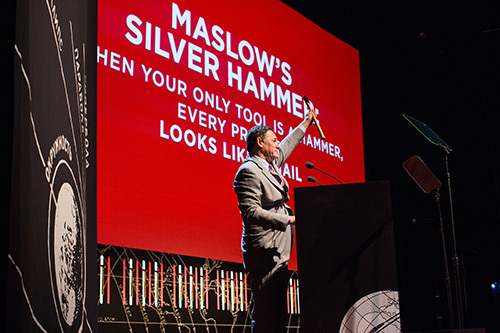
Honorees of the Tribeca Disruptive Innovation Awards receive a ball-pein hammer as their official award – nicknamed Maslow’s Silver Hammer in honor of psychologist Abe Maslow. The hammer embodies the spirit of an awards event that is fast becoming the place to meet and greet the world’s most creative and innovative entrepreneurs: celebrities from every business and intellectual domain that exists today.
After the fun and antics of the uber-creative awards ceremony at the Skirball Center for the Performing Arts in NYC, the disruptive learning begins in original breakout sessions that feature the honorees and other honored up-and-coming entrepreneurial talent. As I sit and listen to the perspectives of these fascinating panelists on real world challenges, it strikes me that their important lessons should be streamed into every career-related teacher-training program as well as student classrooms across the globe.


Okay – so I’m a Disruptive Fellow and maybe that means I’m biased, but I’ve also written over 200 artigos sobre a melhor forma de preparar os jovens para o ensino superior e no mercado de trabalho, ligando-os com a aprendizagem criativa e imaginativa. Um educador respeitado confessou-me na semana passada, “Cathy, Eu acho que os acadêmicos fazem um ótimo trabalho preparando os alunos para carreiras na academia, mas não estou certo de que já descobriu a melhor forma de preparar os jovens para as outras vias relacionadas à carreira.” Será que isso tem alguma coisa a ver com os trabalhos de empregadores estão oferecendo atualmente, mas não consegue encontrar o talento para preencher? So can I have a hammer?

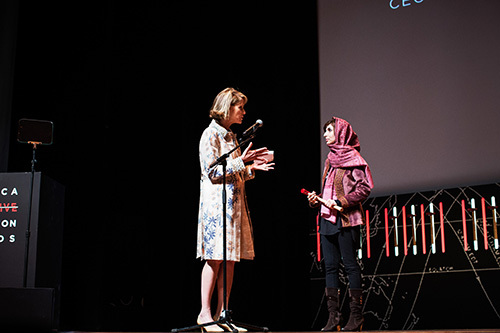
I predict an education entrepreneur will create a gold standard global career-related employers degree (CRED) with an innovative, always-evolving curriculum (accredited by both educators and the world’s great CEO’s). This will disrupt high school and college as we know it since the CRED will become as popular as (if not more so than) the traditional academic model that exists today. Not convinced? Google has indicated that GPA’s and test scores have become less and less the criteria for hiring, and already has teams of which 14 percent are young people who have never gone to college. And kids don’t want to work for companies like Google, direito?
I also predict that teachers for the CRED will come from both worlds – the world of education and the world where learning is “in the doing”. Perhaps the teachers will be like my panelists today in A Pesquisa Global para a Educação – Dr. Francis Collins, Director of the National Institutes of Health (NIH) and a TDIA honoree; Jay Walker, founder of LabTV, creator of Priceline and a TDIA honoree; Anna Patterson, VP Engineering, Artifical Intelligence for Google and a TDIA panelist; Ruzwana Bahir, CEO and Founder of Peek and a TDIA panelist; and our always disruptive leader, Craig Hatkoff, co-founder of the Tribeca Disruptive Innovation awards.

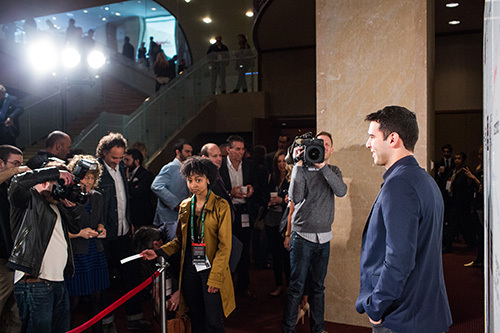
Ladies and Gentlemen – Would you please tell me about a significant challenge you faced in building your enterprise that would be educational to students trying to develop the skills needed to problem solve in your enterprise or in enterprises generally?
Francis Collins: One major challenge facing the National Institutes of Health (NIH) is how to enhance the diversity of the U.S. biomedical workforce – which falls woefully short of reflecting the diversity of the general population. This lack of diversity is damaging our ability to carry out research as innovatively and effectively as we would like. After taking a hard look at our shortcomings, which included evidence of unacceptable disparities in grant success rates between black and white researchers, NIH is moving forward to address this situation. Our actions range from mentoring efforts aimed at making a career in biomedical research appealing to youth who may lack role models in their own communities, aos programas de avançar as carreiras de cientistas talentosos de sub-representados grupos minoritários. Recrutar e reter as mentes mais brilhantes, independentemente da raça, etnicidade, gênero, incapacidade, e nível socioeconômico é extremamente importante não só para NIH, mas para toda a U.S. empreendimento científico.
Jay Walker: Focando “definição do problema” separates professionals from amateurs in entrepreneurship. Too many start-ups rush to design a product or service before they think through the exact nature of the problem they are trying to solve, e o que o cliente que eles estão tentando resolvê-lo para. Um profissional pode definir a sua idéia para um novo empreendimento em uma ou duas frases que claramente e simplesmente descreve um problema, um cliente, a solution and a price. Por exemplo, some while back we worked with Federal Express to help them move beyond Monday-through-Friday business document delivery to 364-days-a-year, consumer-facing, overnight package delivery. Mas “delivering packages overnight” isn’t a problem. The problem FedEx’s customers faced that we identified was surprising: at that time, Christmas catalog sales ended in mid-December to allow time for traditional shipping. By providing overnight package delivery through Christmas Eve, FedEx doubled the Christmas selling season for catalog merchants.
Ruzwana Bashir: There are a whole host of challenges associated with starting a new business. When I started working on Peek.com, I learned that the activities market is pretty fragmented, offline and massive ($100bn globally), but there was no fail-safe place for consumers to go to find activities and book them. By creating a business that was new and disruptive, I realized there were always going to be reasons why people were going to tell me the company would fail. Assim como empresário, Eu acho que é crucial para ser persistente para superar os obstáculos inevitáveis que você irá enfrentar, e estar disposto a trabalhar muito duro, uma vez que nada que vale a pena fazer é sempre fácil. Você também tem que ser muito estratégica, para que você possa receber novas informações de forma rápida e ser adaptável o suficiente para agir sobre ela. Paralelamente a este, é útil ter grandes habilidades analíticas, e para se certificar de que você reunir um time muito talentoso com habilidades variadas que podem complementar o seu próprio.
Anna Patterson: Tenho sido um dot-com empresário, engenheiro e cientista. A fundação do meu campo geralmente começa com a estudar ciência da computação. Muitos estudantes me perguntam se eles precisam ser “grande em matemática” para ter sucesso em campos STEM. Os alunos são geralmente referindo-se a ter um talento com Calculus. Muitos campos STEM precisa Calculus, mas muitos campos STEM não fazer. Se você fosse grande em Geometry, mas encontrou Calculus complicado, a maioria dos campos STEM estão abertas para você. Em Stanford, a introdução ao curso de ciência da computação não tem pré-requisitos matemáticos. The skills to succeed are methodical thinking and the willingness to work. You need to create then fail, então debug.


Craig – Você acha que podemos ensinar as crianças a serem mais empreendedoras?
Craig Hatkoff: Empresários viver em um constante estado de temor, admiração e encantamento (AWE). A palavra mais emocionante empreendedor pode ouvir é “uau.”
Eu acredito que as crianças nascem com a mesma paixão ardente de revelação e descoberta como empreendedores. No entanto, hoje mais educação é entregue em pacotes sem inspiração por rote. Adicionalmente, os pais muitas vezes inadvertidamente reprimir a inclinação natural de uma criança a compreender como funciona o mundo — um mundo de possibilidades em que a assunção de riscos é recompensado e fracasso é aceito não punido. Um mundo onde “não pode” é uma palavra de quatro letras.
Eric Raymond, autor do A Catedral eo Bazar, escreve, “Se você quiser resolver um problema interessante, encontrar um problema que lhe interessa!” Essa é a raiz do espírito empreendedor: para resolver um problema interessante que se manifesta em um produto, um serviço ou apenas uma boa idéia maldita. Os empresários não nascem feitos. Precisamos deixar que as crianças descobrem os problemas que queremos resolver, como Steve Jobs, Jack Dorsey ou 15 anos de idade, Jack Andraka, que criou a tira de teste de câncer de pâncreas.
Para mais informações sobre os Prêmios de Inovação Tribeca Disruptive: http://www.tribecadisruptiveinnovationawards.com/

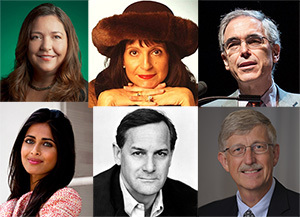
Linha inferior, esquerda para a direita: Ruzwana Bashir, Craig Hatkoff, Francis Collins
Todas as fotos são cortesia dos Prémios Inovação Tribeca Disruptive
Na busca Global para a Educação, se juntar a mim e líderes de renome mundial, incluindo Sir Michael Barber (Reino Unido), Dr. Michael Bloco (EUA), Dr. Leon Botstein (EUA), Professor Clay Christensen (EUA), Dr. Linda, Darling-Hammond (EUA), Dr. Madhav Chavan (Índia), Professor Michael Fullan (Canadá), Professor Howard Gardner (EUA), Professor Andy Hargreaves (EUA), Professor Yvonne Hellman (Holanda), Professor Kristin Helstad (Noruega), Jean Hendrickson (EUA), Professor Rose Hipkins (Nova Zelândia), Professor Cornelia Hoogland (Canadá), Honrosa Jeff Johnson (Canadá), Senhora. Chantal Kaufmann (Bélgica), Dr. Eija Kauppinen (Finlândia), Secretário de Estado Tapio Kosunen (Finlândia), Professor Dominique Lafontaine (Bélgica), Professor Hugh Lauder (Reino Unido), Professor Ben Levin (Canadá), Senhor Ken Macdonald (Reino Unido), Professor Barry McGaw (Austrália), Shiv Nadar (Índia), Professor R. Natarajan (Índia), Dr. PAK NG (Cingapura), Dr. Denise Papa (US), Sridhar Rajagopalan (Índia), Dr. Diane Ravitch (EUA), Richard Wilson Riley (EUA), Sir Ken Robinson (Reino Unido), Professor Pasi Sahlberg (Finlândia), Professor Manabu Sato (Japão), Andreas Schleicher (PISA, OCDE), Dr. Anthony Seldon (Reino Unido), Dr. David Shaffer (EUA), Dr. Kirsten Immersive Are (Noruega), Chanceler Stephen Spahn (EUA), Yves Theze (Lycée Français EUA), Professor Charles Ungerleider (Canadá), Professor Tony Wagner (EUA), Sir David Watson (Reino Unido), Professor Dylan Wiliam (Reino Unido), Dr. Mark Wormald (Reino Unido), Professor Theo Wubbels (Holanda), Professor Michael Young (Reino Unido), e Professor Minxuan Zhang (China) como eles exploram as grandes questões da educação imagem que todas as nações enfrentam hoje.
A Pesquisa Global para Educação Comunitária Página
C. M. Rubin é o autor de duas séries on-line lido pelo qual ela recebeu uma 2011 Upton Sinclair prêmio, “A Pesquisa Global para a Educação” e “Como vamos Leia?” Ela também é autora de três livros mais vendidos, Incluindo The Real Alice no País das Maravilhas, é o editor de CMRubinWorld, e é um Disruptor Fundação Fellow.
Siga C. M. Rubin no Twitter: www.twitter.com/@cmrubinworld




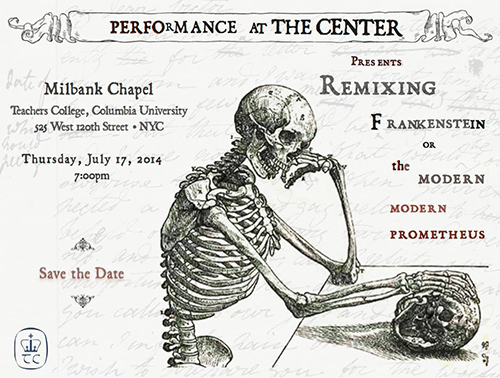
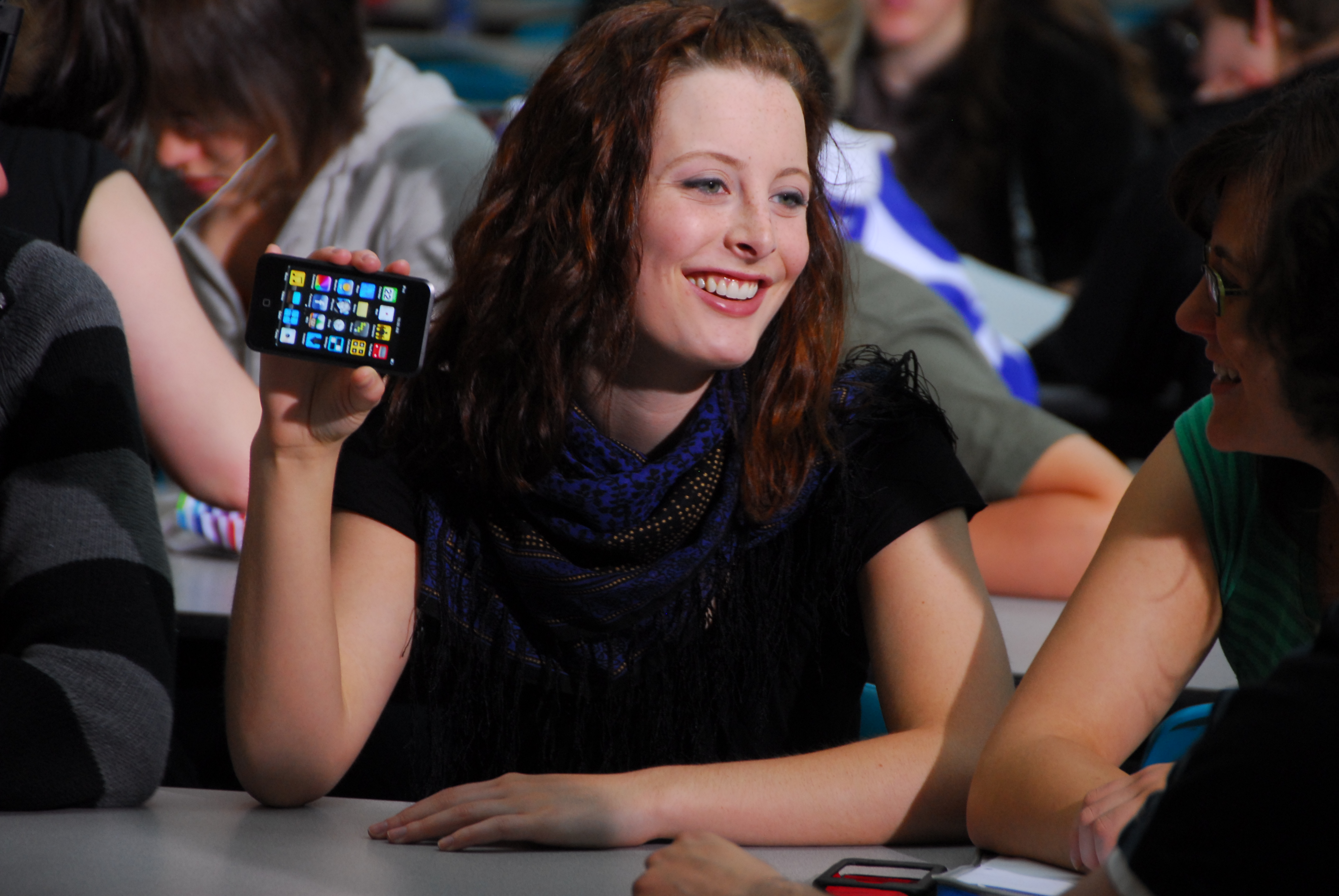
Comentários Recentes